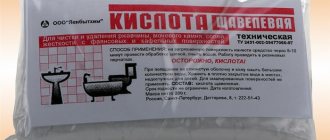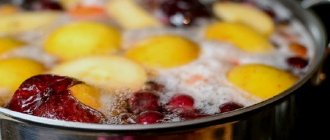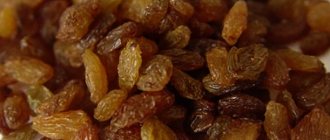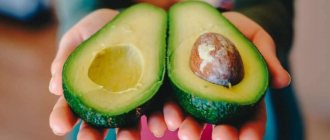Prunes are loaded with vitamins and minerals, are rich in nutrients, and don't have many calories. It is very difficult to eat a large amount of dry fruits at one time, so the remaining ones must be preserved without losing their properties. Prunes do not require special storage conditions, but a number of rules must still be followed.
General recommendations
General recommendations for storing prunes are as follows:
- Darkness. Dried fruits should not be stored under the influence of artificial or natural light, otherwise they will begin to lose moisture, dry out and become less tasty. Light also negatively affects their value.
- Low temperature. If when storing prunes at room temperature, their shelf life is only six months, then when they are placed at a temperature from 0 to +5 degrees, this value doubles.
- Average humidity. The fruit does not dry out or rot if the humidity is maintained between 70 and 90%.
- Tightness. Packaged dried fruits should not be exposed to oxygen, otherwise it will oxidize them and lead to premature spoilage.
- No strong-smelling products in the immediate area. Dried fruits absorb surrounding odors very quickly, so make sure to store them airtight in advance.
There are no particular difficulties in storing prunes; they are not a fastidious product when it comes to storage, so you only need to follow the described rules.
Preparation of prunes
You need to start preparing dried fruits by selecting them; to do this, consider the following tips:
- Choose fruits that have been dried relatively recently. The shelf life of prunes is usually 8-12 months.
- Pay attention to matte, possibly dusty fruits. The glossy sheen of the peel may indicate additional treatment with chemical solutions.
- Rub the prunes on the inside of your wrist and look at the skin. If there is a purple mark left on it, it is not recommended to buy such dried fruits.
- For long-term storage, choose more dried fruits. Although juicy dried fruits are often tastier, you will not be able to preserve them for more than 1-2 months.
After selecting the dried fruits themselves, they need to be prepared for long-term storage. There is no need to wash them; the natural coating creates a special protective layer on the fruit, which facilitates its long-term storage.
Select and discard prunes if they show signs of rotting, spoilage, damage, or infestation by pests or insects. Only whole specimens are suitable for long-term storage.
If you are dealing with under-dried or dried prunes, you will have to dry them, otherwise you will not be able to preserve them for more than a few weeks. You can do this in a special dryer or in a conventional oven at low temperature in the “convection” mode.
Step-by-step recipe with photos
1. Large, oval-shaped blue plums will be very tasty when dried. Round plums are not suitable: they are too fleshy and juicy, and have a pronounced sweet taste.
Read also: How to cold salt ram's horn pepper
2. Wash the plums, removing the whitish coating. They lay hard fruits that have not yet ripened. Soft, watery, overripe plums are also removed.
3. Cut the fruits into halves and remove the seeds. The cut should be nice and symmetrical, avoiding jagged edges or tears.
4. Plums are salted, observing a sense of proportion. Excess salt will negatively affect the taste. There is no need for sugar in this recipe. As excess moisture evaporates, the natural sweetness of the fruit will be enhanced. Garlic cloves are divided into thin slices, and these garlic pieces are placed in the plum halves. A “garlic pit” will appear in dried plums. It will turn out drier than plum pulp.
5. Fruits do not like complex combinations of herbs. A mixture of basil and parsley is an affordable seasoning with a soft, unobtrusive aroma and a fresh taste. Plums are sprinkled with dry herbs.
6. Hot pepper is an additional component; it may not be included in the main recipe if you plan to use dried plums as a universal snack. When plums are intended to accompany meat dishes, hot peppers will be needed. The red, spicy pulp is cut into small cubes and placed next to the garlic.
7. The electric dryer tray does not need to be lubricated with anything. Plums are placed in one layer. One and a half kilograms of plums will be placed on two trays, the third will remain in stock.
8. The plums are dried for 20 hours, maintaining the same average heating mode of the electric dryer.
9. Place the plums in a jar, and add a whole hot pepper there for flavoring and mild spiciness.
10. Fill the jar with refined sunflower oil. Dried plums are stored in the refrigerator.
How to dry plums well and make delicious dried fruits using an electric dryer?
In an electric dryer, plums can be dried or dried. For simple drying, simply remove the pit from the plum (if possible, if not, prick the skin), pour over boiling water and place on drying trays. After drying, such a plum will be dense and tough - it is good to add it to winter compote. If you want to make dried plums, then you will need to boil them in sugar syrup, then after drying they will retain their elasticity, be sweet and soft. It is best to dry plums with a thick skin; the thin-skinned fruits spread when cooked; it is not for nothing that prunes are traditionally used to prepare dried fruits.
This is how the renklod turns out:
Before putting plums in an electric dryer, you need to carefully select the fruits - they must be free of damage and rottenness. Then the plums need to be washed thoroughly, the stalks removed, and then dried thoroughly on a paper towel or simply in the sun.
Blanching solution: 8 grams of baking soda per 1 liter of water.
Place the plums in a colander and immerse it in a boiling solution for 1-2 seconds, then quickly dip the plums in cold water. After this, place the fruits on the wire rack in one layer. Drying the plums will take three stages:
- the first stage of drying - at a temperature of 45-50 degrees for 3-4 hours
- second stage of drying - at a temperature of 60-65 degrees for 3-6 hours
- third stage of drying - at a temperature of 70 degrees for 3-6 hours
Moreover, every hour of drying, the trays need to be swapped, and in the interval between the second and third stages, the plums need to be cooled in the fresh air for 5-6 hours.
Ready prunes, when pressed, should not release any juice, and the pulp around the pit should not be too wet.
Selection and preparation of storage containers
Based on the general rules for storing prunes, you need to choose hermetically sealed containers that will not allow oxygen and foreign odors to enter their contents.
There are several types of containers that are often used to store prunes:
Glass, enamel and ceramic jars and bottles
Tin containers
Containers made of thick plastic
Linen bags
Paper bags (a small amount of prunes can simply be wrapped in parchment paper)
The container you use for prunes must first be rinsed with boiling water to disinfect it. Also, before using it, make sure that the lid is tightly and tightly closed.
If you use linen or linen bags for long-term storage of dried fruits, it is also recommended to disinfect them first. However, for this, not ordinary boiling water is used, but a saline solution. Soak the bags in a concentrated solution of salt for several hours, then wash and additionally rinse with boiling water. This way they will be completely ready for storing dried fruits.
We use an air fryer
It turns out that not only meat dishes are cooked using an air fryer, but also plums are dried. For business, take medium-sized fruits. Wash thoroughly and dry with a kitchen towel. The plums are then placed into the unit. Set the time to 45 minutes and temperature to 62°C. Start the device. After the procedure, leave the product to cool. Then the process is repeated two more times.
After 12 hours, the plums are dried again in the air fryer 3 times for 45 minutes. The interval between procedures is 1 hour. The finished prunes are carefully laid out on paper towels. Leave for approximately 24 hours. Then packaged and stored in a dry place.
Storage at room temperature
You can store prunes either at room temperature or in the refrigerator - their keeping quality will depend on this. If we talk about placing dried fruits at a temperature of 18 to 25 degrees, they will be stored in the same condition for up to six months.
To place containers or bags of prunes, you need to choose a dark and cool place where the product will not be disturbed by sudden changes in temperature and humidity.
The most commonly used places for this are:
Kitchen cabinets, drawers and storage systems
Pantry room
Balcony or loggia (the main thing is that the room used is heated)
If you want to store prunes in the kitchen, do not put them in drawers located next to the stove or oven. Due to temperature fluctuations and its constant increase, prunes will not be stored there for a long time.
If we are talking about a pantry room or a balcony/loggia, the temperature in them is usually maintained somewhat lower than in the rest of the apartment, due to which prunes are stored better.
In any case, prunes should be packaged in prepared containers and placed on closed shelves, cabinets and drawers so that they are not exposed to sunlight or artificial light. If you are not sure about the tightness and safety of the packaging, you can additionally place mint gum or bay leaf nearby to protect against pests.
The video below also talks about where and how to store prunes at home:
How to choose fruits
High-quality prunes have a dense consistency and dark skin, evenly wrinkled over the entire surface. It feels firm to the touch, but not brittle. With a little effort, you can slightly press and bend the dried fruit. What you need to pay attention to when buying dried plums:
- The appearance of the fruit should be uniform and matte; if the surface of the prune has a bright shine, this indicates that it has been treated with oil. Such a product will not store well.
- The fruit should be free of stains, plaque and dirt. If you rub the prunes with your fingers, there should be no dust, coloring or sticky substance left on them.
- Too fleshy, soft plums are most likely dried rather than dried. This treatment allows you to retain more moisture in the fruits and makes them more palatable, but the shelf life is reduced. Dried plums are best consumed immediately rather than stored for long-term storage.
Cold storage
Storing dried fruits in the refrigerator is considered a more advantageous option, since at temperatures from 0 to +8 they can be stored for up to a year. The only drawback of storing prunes for such a long time is the risk of weakening their taste and benefits.
When storing prunes in the refrigerator, consider the following recommendations:
- Place it in a paper bag or wrap it in foil or parchment paper and poke a few holes in the bag with a toothpick to allow air circulation.
- Additionally, you can place packaged dried fruits in a glass or enamel container with a lid to protect them from foreign odors.
- Store prunes in the compartment for vegetables and fruits - a comfortable temperature and humidity for them is maintained there, which will prevent the product from becoming damp and rotting.
- At least once a week, unpack the prunes and check them for integrity. Dispose of spoiled fruits, and if condensation appears in the container, it is recommended to change the storage method. Also, sometimes this indicates storage of under-dried dried fruits - try drying them.
- There should be no products with a strong odor (for example, smoked fish) near the container with prunes .
It is not recommended to store prunes in the refrigerator door due to the unstable temperature in it, which will reduce its shelf life.
Storing dried fruits in the refrigerator helps save the valuable product from high humidity and pests that can overtake them when storing the product at home at room temperature.
Cooking plum and apricot jam
We continue to prepare plum preparations, the recipes for which, as you can see, are numerous. Add apricots for a special taste. You will need 3.5 kg of plums and 1.5 kg of apricots for two kilograms of sugar.
Remove all fruit from seeds. Cook separately from each other in a small amount of water. After softening, rub the resulting masses through a sieve or pass through a meat grinder. Can be ground in a blender. Cook the puree mixture with granulated sugar, stirring all the time, until thickened. To prevent the jam from burning, keep the fire low. Place hot into jars and seal. You can close it with nylon lids, but then you will need to store it in the refrigerator at a constant temperature.
Freezing
If the shelf life of one year is not enough for you when it comes to storing prunes, you can freeze them. In this state, the product can be stored for up to several years.
However, keep in mind that prunes are already a processed product, ready to eat, so it doesn’t always make sense to freeze them. In addition, during the defrosting process, the fruit loses some of its valuable properties and taste, so it is more suitable for use in cooking.
Here's how to freeze prunes:
- Pour boiling water over it and drain all the liquid using a sieve or colander.
- Dry the dried fruits slightly by placing them on disposable paper towels.
- Place the dried prunes on a board lined with parchment paper, then cover it with cellophane and put it in the freezer.
- After 4-5 hours, remove the board and transfer the frozen dried fruits into an airtight container. You can use vacuum bags or plastic containers with tight-fitting lids for this. To be safe, you can combine several packaging options.
- Place the prunes back into the freezer. It is recommended to store it in a compartment with vegetables, fruits, berries and other low-smelling products to avoid mixing their odors.
To defrost prunes, simply remove them from the freezer and leave them at room temperature for a few hours. You can use it after this for 2-3 days.
Checking readiness
It is impossible to say exactly how long it will take to dry the plum. The duration of the process even depends on the time of harvesting, room temperature and many other external factors. Therefore, the condition of the product must be constantly monitored, periodically checking for readiness.
It is important that the pieces are cooled down - while the pulp is hot, it will always seem underdried
To determine readiness, bend the piece in half and look to see if the juice is released and if the peel cracks. Such signs indicate the incompleteness of the process.
Overdried plums become brittle and break at the bend. This cannot be allowed. It’s better to under-dry a little than to ruin the entire batch of the product.
Storage errors
Even if you follow the basic rules and recommendations for storing prunes, they can dry out or become coated just a week after purchase.
This may be due to the following storage errors:
- Pre-washing prunes before storage. It is not recommended to wash it in order to preserve its valuable properties and taste longer.
- Storing under-dried fruits. Be sure to make sure that the prunes are completely dry before storing them for a long time, and dry them if necessary.
- Storing prunes of different freshness and degrees of dryness together.
- Use for storing plastic bags. In them, prunes quickly begin to “fade”, become covered with condensation, plaque, and, as a result, mold.
- Neglecting periodic checking of fruits. At least once a week you need to check stored dried fruits and dispose of fruits with signs of spoilage, rotting, plaque, or pest damage.
Such mistakes in storing prunes are made quite often and significantly reduce the shelf life of dried fruits. In addition, their illiterate placement for a long period of time negatively affects their value and benefit.
Answers to frequently asked questions
What if the prunes are covered with a white coating?
Most often, this occurs when dried fruits are stored in plastic bags and begin to suffocate, as a result of which a white coating, a fungus, forms on them. Then they are not suitable for use.
How long can prunes be stored at room temperature?
If you seal it tightly and put it in a dark, cool place, it can last up to six months.
Do I need to wash or soak dried fruits before storing?
No, if you want to keep them in their original condition for a long time, you don't need to wash them.
Why does condensation appear in containers with prunes when stored?
This may indicate storage of under-dried fruits. Remove them from the container and dry them additionally in a special dryer or oven at low temperature in the “convection” mode.
Is it possible to store prunes and other dried fruits together?
No, it’s better to package them in different packages and containers to extend their shelf life.











